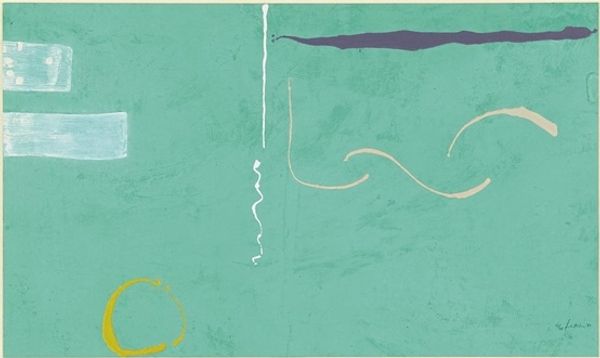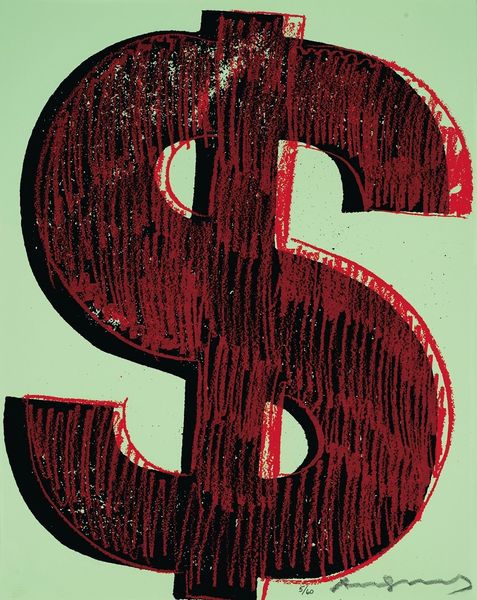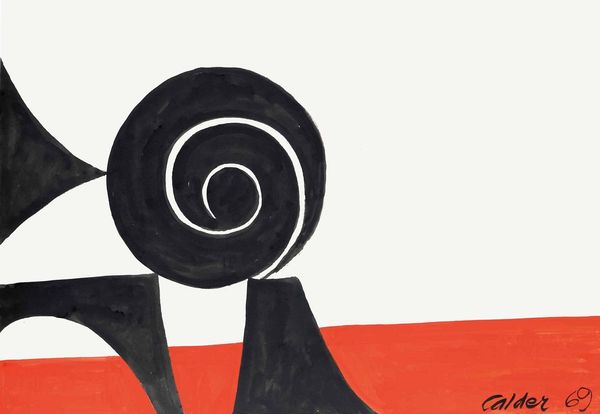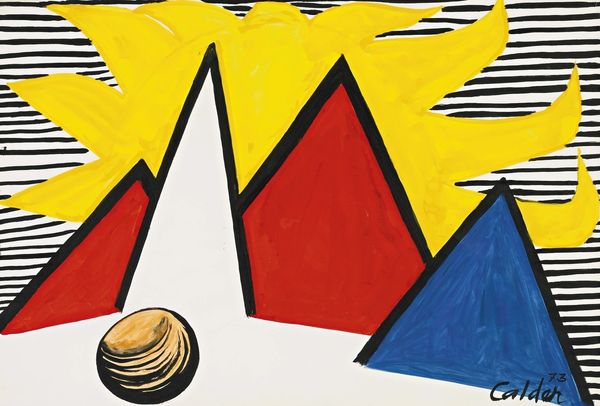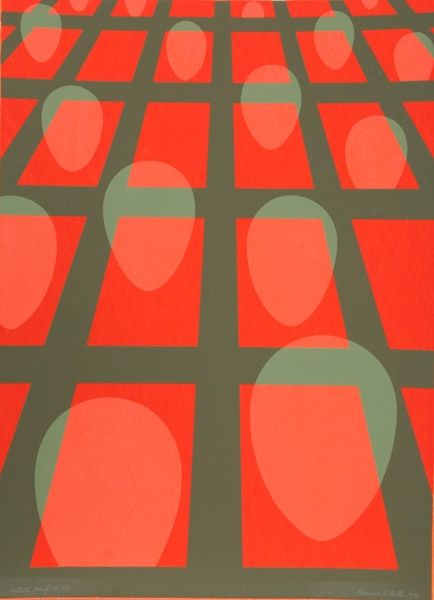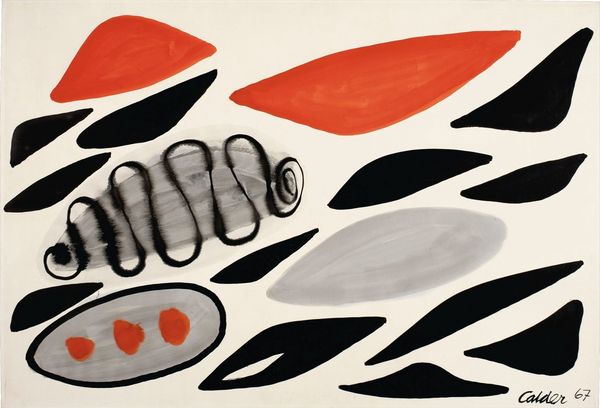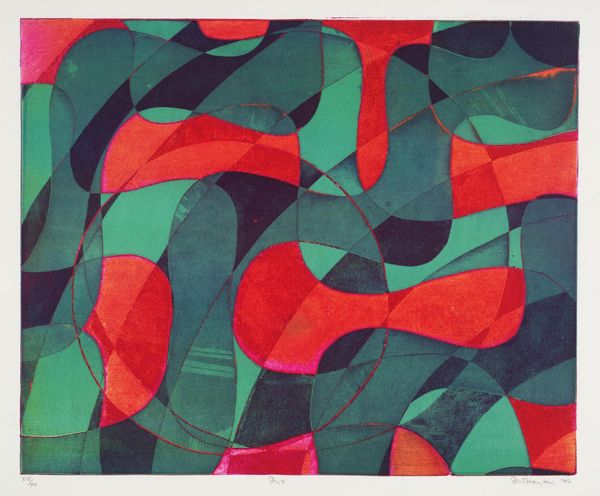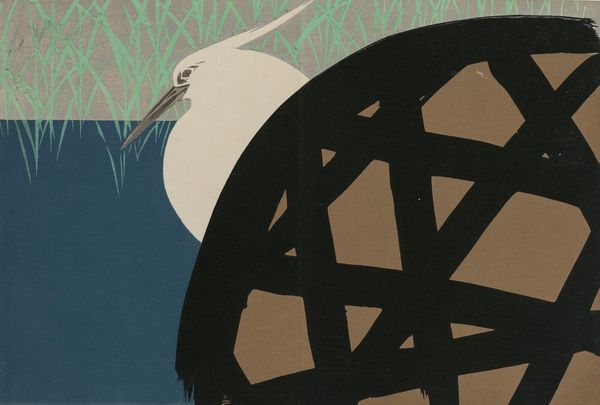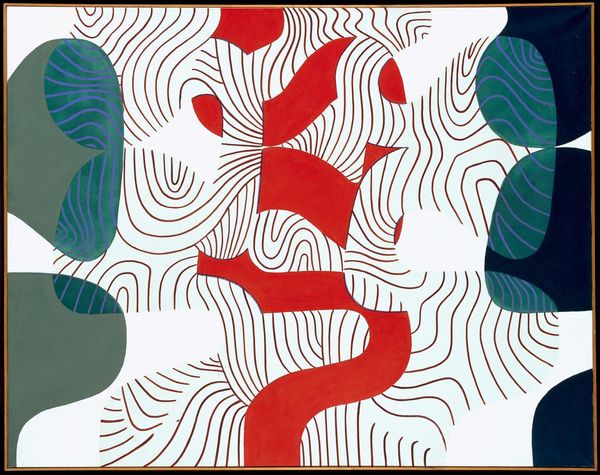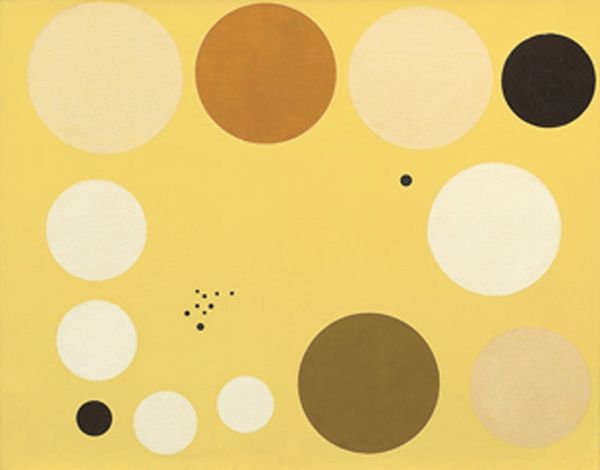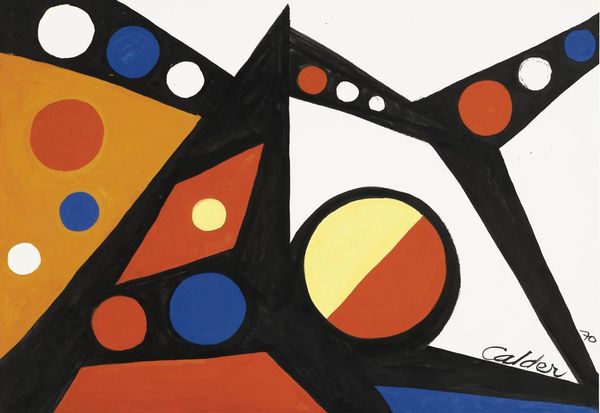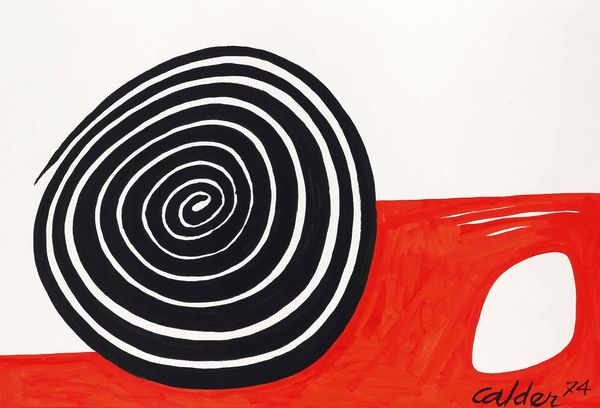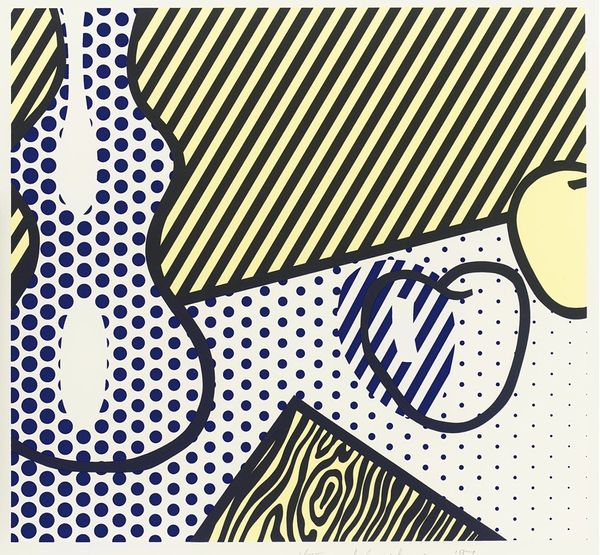
collage
#
collage
#
non-objective-art
#
op-art
#
op art
#
geometric
#
pop-art
Copyright: Modern Artists: Artvee
Curator: Up next we have Victor Vasarely’s “Flores G 1 Collage” from 1962. Editor: It strikes me as remarkably serene, actually. A very simple arrangement of shapes and colors… almost meditative in its quiet repetition. Curator: Exactly! Note Vasarely’s choice of the collage medium here. He’s meticulously cut and layered these simple geometric shapes, ovals really, to create this… intriguing spatial composition. The textures and edges give away its constructed character. It invites a reflection on the artist's labor, his actions and materials being crucial to appreciating the end result. Editor: I’m particularly interested in how it reflects a shift in the public’s consumption of art in the 60s. Vasarely, although producing individual collages such as this, simultaneously engages ideas of mass production through a print based practice. The work presents a vision of accessible art at a moment in which there was great pressure for institutions to welcome larger and more diverse publics. Curator: And look at the shapes themselves! The layered ovals, repeated in various sizes, explore perception and optical illusions. Are they floating? Are they receding? The materiality asks the audience to engage directly, physically with art, departing from traditional approaches. This kind of construction blurred lines of 'fine art'. Editor: Certainly! The composition's simplicity plays a part in the period’s visual language—that interest in flattened perspective is related to developments across Pop art. But where other artists might focus on representational imagery drawn from advertising, Vasarely offers abstraction. In many ways, this collage seems to respond to concerns around the aesthetic experience and consumer society, which is reflected in Vasarely's success in garnering popular success as a recognized visual language that had commercial applications, in ways that previous artists did not. Curator: It really highlights the power of art created via very clear processes, that nevertheless offers a challenging depth. Editor: Ultimately, what appears simple opens into something more intricate through an awareness of how artworks become embedded in wider cultural, economic and political contexts.
Comments
No comments
Be the first to comment and join the conversation on the ultimate creative platform.
